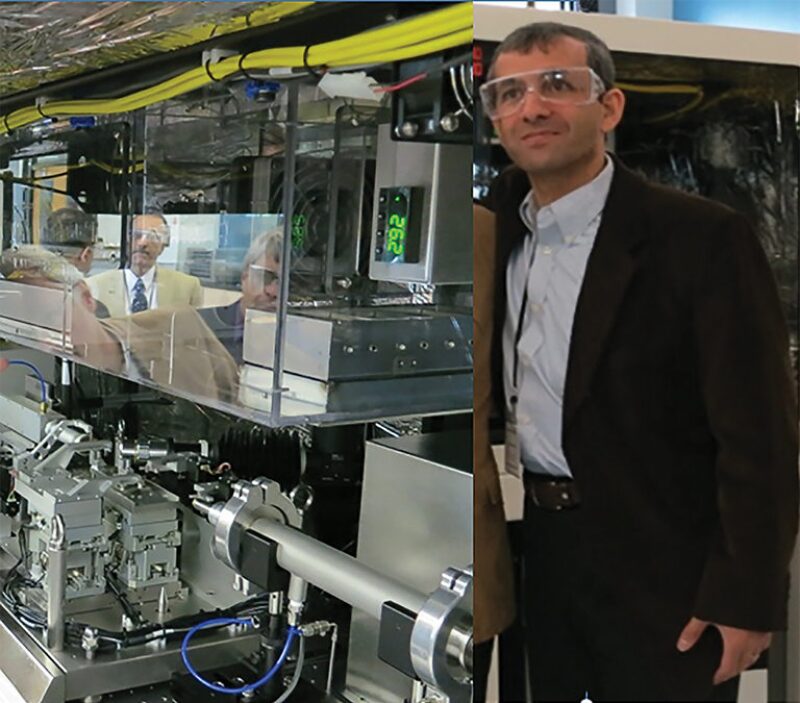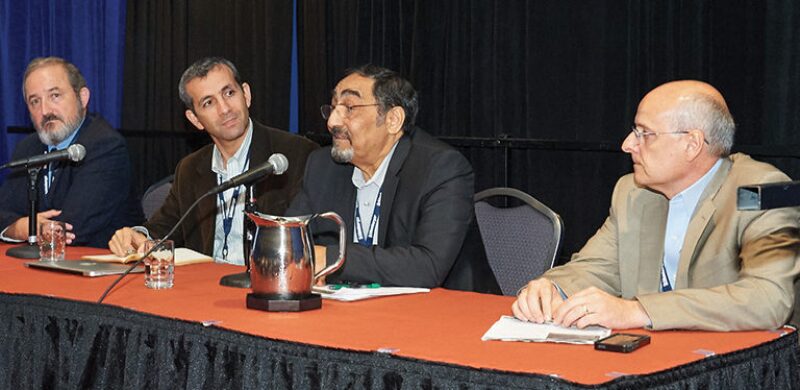The label unconventional oil and gas stubbornly hangs on because these formations cannot be understood using the rules of conventional petroleum engineering.
To illustrate what makes it so different, Erdal Ozkan, a professor of petroleum engineering at Colorado School of Mines, pointed out that shale is often so tight that “you do not want to count the zeros” needed to measure the infinitesimally small permeability rate, and the pressure needed to force oil out sounds unattainably high.
The obvious conclusion is “you cannot produce any of this. How could you with this permeability? What are you doing, day dreaming? We are actually producing from these formations,” he said.
Ozkan used that observation to introduce a session at the 2015 Unconventional Resources Technology Conference in San Antonio, Texas, on the need to think “outside the conventional reservoir engineering perceptions.” That is a starting point to getting significantly more out of unconventional formations.
The four panel members focused on the need for a better understanding of the physics and chemistry of nanoscale pore spaces. Among their concerns is the major impact that miniscule pore throats can have on how much oil and gas is produced and what sort of hydrocarbons come out. These passages perform like a membrane, allowing natural gas liquids and gas dissolved in oil to get out, while trapping heavier oil molecules and perhaps free natural gas adhering on the pore walls, he said.
Beyond 10%
The message was that years of research will be needed to understand the rock and find ways to extract the oil and gas trapped inside. Research laboratories are still seeking ways to simulate reservoir conditions in ways that can be observed using delicate laboratory equipment. Low oil prices have apparently pushed thoughts of enhanced oil recovery (EOR) out of the minds of oil industry decision makers. Sustaining high levels of unconventional oil production in future decades will require producers to push ultimate recoveries past 10% of the oil in these formations.
“You better start working on this pretty soon because it will take a while to figure this out,” said Paul Leonard, manager of reservoir technology for Pioneer Natural Resources, before asking if production could be enhanced using chemicals.
The answer was that EOR using chemicals is being tested in research laboratories with some success. But what is known has to be adapted to formations that are poorly described by the current vocabulary for rock properties.
A few surfactants have proved promising in tests, said Mohammad Piri, a distinguished associate professor of petroleum engineering at the University of Wyoming.

Those tests, which will be detailed in an upcoming paper, are an outgrowth of fundamental work on whether shale is prone to attract water or oil, which would mean it is either water-wet or oil-wet. The answer has been both. When a tiny sample, which has been cleaned using air, is exposed to brine and then oil, the salty water adheres to certain sections of the rock and the oil to others.
For Piri, the challenge has been to find a chemical that allows the rock to release the oil in the oil-wet area, without changing the valuable water-wet properties. While he said there have been some promising surfactants identified, it is early work.
The short presentation on unconventional rock wettability during the session was to “show we can at least scratch the surface of these complex systems,” Piri said.
Driving Force
Another fundamental question is what drives oil out of the pores in unconventional rocks. The force behind the light liquids appears to be the gas that remains behind, making this an “internal gas drive system,” said Matt Honarpour, a principal reservoir engineer at BHP Billiton.
This helps explain the force behind those reservoirs producing a high percentage of oil and a low percentage of gas. But that answer raises another question, “What is the source of the gas that is produced?” He said it may well be gas dissolved in the oil, known as solution gas, which would define how these reservoirs need to be managed to get the most oil and gas out over a well’s life. Maximizing daily output early on could reduce the pressure to below the pressure where the gas would come out of solution—the bubblepoint—diminishing the gas drive.
“The challenge is to understand the physics of this gas drive behind the oil coming out of the reservoir,” Honarpour said. Filling this gap will require greater use of accepted tools such as downhole pressure gauges and microseismic testing, and advances in field monitoring and data analysis.
What is known is the numbers are not likely to resemble those in a conventional reservoir. Unconventional formations are likely to have a lower bubblepoint pressure because conditions inside nanoscale pores limit gas/liquid separation, he said. But measures are needed to make use of that observation.
On the plus side, it may be possible to maintain the pressure by reinjecting produced gas. It is a promising possibility but Honarpour said there are many unanswered questions, beginning with the volume and pressure needed to inject enough gas to replace the gas produced with the oil. Even if injection fails to enhance production, gas injection could be used to store the injected gas until the fuel can be sold for a better price. For now, the best results are a product of targeting and drilling the highest-rated opportunities. “The rock is controlling our fate,” said Eric Michael, director of petroleum systems at ConocoPhillips.
Geochemical testing has shown there are a variety of chemical signatures in gas, some of which have been used as a marker for predicting how productive an area might be. “In 6 miles, this chemical makeup can change significantly,” he said.
It is part of an effort by ConocoPhillips to use geochemistry as a predictive tool. “The 6-month yield needs to be tied to rock properties,” Michael said.
The presentations led audience members to ask how, or even if, the methods used to describe unconventional reservoirs will generate data that can be plugged into the available reservoir models.
Testing unconventional rocks to generate conventional rock property measures, such as permeability, has been a knotty problem. Piri said that digital imaging methods are making it possible to measure movement within nearly impermeable rocks.
But the panelists did not see radical changes ahead in reservoir modeling. For now, the best option is modifying conventional reservoir simulators to incorporate new models. More needs to be known to create a model fully representing how unconventional reservoirs behave.
“This is a fast-developing business. It is 10 to 15 years old at the most,” Ozkan said. “While we work to understand things better, we have to use our existing understanding and tools while we work on better ones.”


